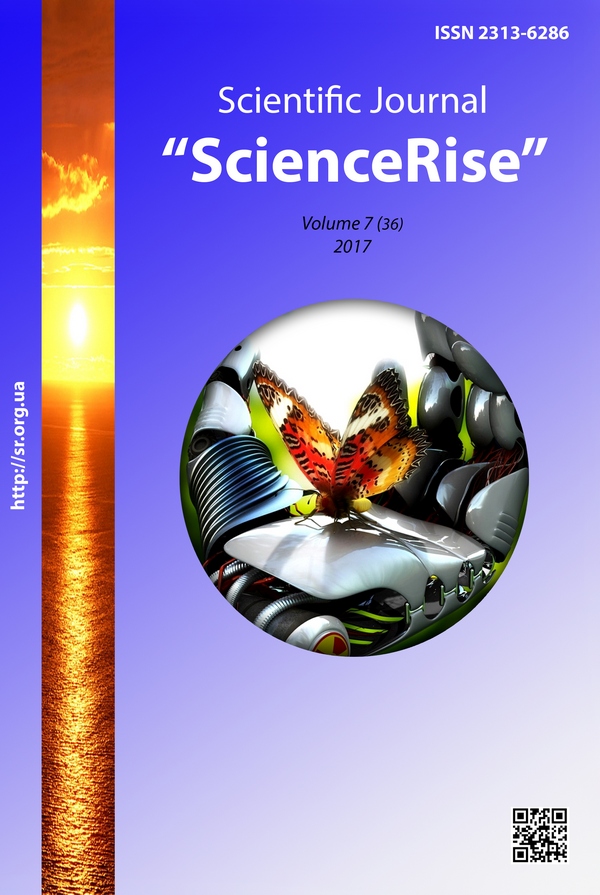Аналіз моделей наборів профільних геопросторових даних генеральних планів
DOI:
https://doi.org/10.15587/2313-8416.2017.106679Ключові слова:
генеральний план населеного пункту, набори геопросторових даних, об’єктно-реляційна модель данихАнотація
Розглянуто та порівняно особливості сучасних моделей організації даних в геоінформаційних системах. Обґрунтовано переваги використання об’єктно-реляційної моделі для розроблення та ведення наборів профільних геопросторових даних генеральних планів населених пунктів. Визначено основні принципи формування наборів профільних геопросторових даних генеральных планів в середовищі об’єктно-реляційної системи керування базою даних
Посилання
The Law of Ukraine «On Regulation of Urban Development» (2011). Verkhovna Rada Ukrainy, No. 3038-VI.
DBN B.1.1-15:2012. The composition and content of the settlement master plan (2012). Kyiv: Minregion of Ukraine, 21.
Liashchenko, A. (2013). System requirements for the modern urban cadastre and urban planning documentation. Urban and territorial planning, 47, 397−405.
Liashchenko, A., Cherin, A. (2011). Architecture of modern GIS based on geospatial data base. Journal of Geodesy and Cartography, 5 (74), 45−50.
Introduction to PostGIS (2017). Boundless. Available at: http://workshops.boundlessgeo.com/postgis-intro/index.html#top
Liashchenko, A., Kravchenko, Yu., Gorkovchuk, D. (2014). Infrastructure approach to the creation of a modern urban cadastre system. Journal of Geodesy and Cartography, 6 (93), 21–27.
Aylikova, A., Karpinskyi, Yu., Liashchenko, A., Paleha, Yu., Yanchuk, V. (2013). Methodological issues of GIS technologies usage in urban cadastre systems. Scientific notes of the Taurida National University named after V. Vernadskyi. Series «Geography», 26 (1), 3–11.
Aylikova, A., Yanchuk, V. (2013). System of classification and symbols for urban planning documentation objects. Urban and territorial planning, 47, 37–46.
Salvemini, M., Vico, F., Iannucci, C. (Eds.) (2011). Plan4all Project Interoperability for Spatial Planning. Plan4all Consortium, 210.
Yeh, A. G.-O. (2005). Urban planning and GIS. Geographic Information Systems, 877–888. Available at: http://www.geos.ed.ac.uk/~gisteac/gis_book_abridged/files/ch62.pdf
Abel, D. J., Kilby, P. J., Davis, J. R. (1994). The systems integration problem. International Journal of Geographical Information Systems, 8 (1), 1–12. doi: 10.1080/02693799408901984
Formulation of GIS-based master plans for amrut cities. Design and Standards (2016). Ministry of Urban Development, 107. Available: http://www.amrut.gov.in/writereaddata/designandStandards_AMRUT.pdf
Shypulin, V. (2010). Basic principles of geographic information systems. Kharkiv: KHNAMG, 313.
ISO / IEC 13249-3:2011. Information technology – Database languages – SQL Multimedia and Application Packages – Part 3: Spatial (2011). International Organization for Standardization.
OpenGIS Implementation Specification for Geographic information − Simple feature access – Part 2: SQL option. Available at: http://www.opengeospatial.org/standards/sfs
Yeung, A. K. W., Hall, G. B. (Eds.) (2007). Spatial Database Systems. Design, Implementation and Project Management. GeoJournal Library, 553. doi: 10.1007/1-4020-5392-4
Maksymova, Yu. (2016). Creation of electronic catalog urban cadastre objects classes for the urban documentation geospatial profile data sets. Urban and territorial planning, 62 (1), 367–377.
##submission.downloads##
Опубліковано
Номер
Розділ
Ліцензія
Авторське право (c) 2017 Iuliia Maksymova

Ця робота ліцензується відповідно до Creative Commons Attribution 4.0 International License.
Наше видання використовує положення про авторські права Creative Commons CC BY для журналів відкритого доступу.
Автори, які публікуються у цьому журналі, погоджуються з наступними умовами:
1. Автори залишають за собою право на авторство своєї роботи та передають журналу право першої публікації цієї роботи на умовах ліцензії Creative Commons CC BY, котра дозволяє іншим особам вільно розповсюджувати опубліковану роботу з обов'язковим посиланням на авторів оригінальної роботи та першу публікацію роботи у цьому журналі.
2. Автори мають право укладати самостійні додаткові угоди щодо неексклюзивного розповсюдження роботи у тому вигляді, в якому вона була опублікована цим журналом (наприклад, розміщувати роботу в електронному сховищі установи або публікувати у складі монографії), за умови збереження посилання на першу публікацію роботи у цьому журналі.

